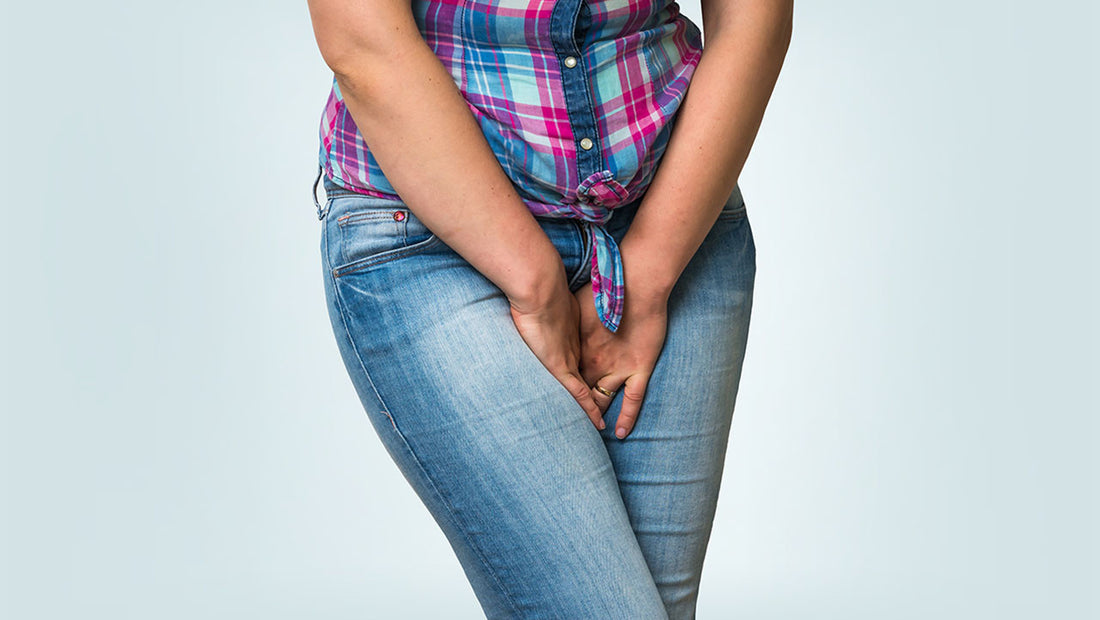
Waiting in Line for a Toilet is Our Most Frustrating Type of Queue
Share
As the UK’s lockdown restrictions begin to ease and shops and restaurants reopen, queues for public toilets will become increasingly common again. Whether it’s queueing up in a park, bar or shop, it will become increasingly difficult for those with incontinence issues to relax whilst spending their day out and about.
Do you find you map out routes to accessible toilets when leaving the house, or do you keep a wary eye on bathroom queues whilst enjoying a meal or browsing the rails? In a recent survey by INNOVO, we found these are surprisingly common worries for those with bladder weakness.

The Survey Results
We surveyed 1,000 women and men aged 35+ to discover how they felt about queuing for public restrooms and the extent to which they know and train their pelvic floor.
Across all respondents, we found that one in three Brits regularly map out the nearest public toilets before leaving home.
After lockdown restrictions eased last summer, toilet queues and accessible toilets became a big issue for many across the country. Many public toilets remained closed, whilst businesses refused toilet access to non-customers. This provided further restrictions on those who need regular toilet access and limited various people’s ability to enjoy time away from their homes.
Despite Brits’ supposed love for queuing, our respondents ranked the following in order of the level of frustration they felt when waiting in line, and - surprise surprise - look what came out on top!
As our world becomes more digital and we’ve adapted to spending all of our time in our home environments, it is interesting to see that queues for public restrooms remain the biggest bug bear - for both sexes - and it’s likely that as lockdown restrictions continue to lift, people will be spending more time out and about, and experiencing these frustrations again - perhaps even more so if there are enforced capacity limitations.
Women
- Public toilets
- To get through to a company’s customer service
- To get through to the doctors (over the phone)
- The checkout at a supermarket/shop
- The bank
- The doctors/dentist/pharmacy
- To get a drink/seat at a bar or restaurant
- The changing room
- To get into a tourist attraction
- The post office
Men
- Public toilets
- To get through to a company’s customer service
- To get through to the doctors (over the phone)
- The doctors/dentist/pharmacy
- The checkout at a supermarket/shop
- To get a drink/seat at a restaurant or bar
- The bank
- The post office
- The changing room
- To get into a tourist attraction

Urinary Incontinence and Queue Times
When it comes to queuing, it is clear from our survey that women tend to wait longer than men - which may be of no surprise to you! One in three men say they are typically in line for less than a minute before a toilet to become available, compared to one in five women; though men are more likely to leave the queue out of frustration, if there is a longer waiting time.
Having to map out the nearest public toilets, before even leaving home, was also common for one in three men and women, with over 50% worrying that they are not able to make it to the toilet in time, if they do encounter a queue.
Across all respondents, we found that 40% of women aged 35+ say they suffer with urinary incontinence, compared to 26% of men.
Urinary incontinence is the unintentional passing of urine and can affect millions of people. It is often caused by a weak pelvic floor; a weakness in the key set of deep muscles situated in the pelvis. The pelvic floor muscles can lose their tone due to a number of different triggers which result in an inability to control urination. One in three women experiences incontinence every single day, which makes it more common than hay fever.
Despite its commonality, according to our survey, one in ten men and women feel too embarrassed to discuss their urinary incontinence with anyone - even their partner, whilst only one in ten consult their doctor about the urinary incontinence issues.
We understand that urinary incontinence is a sensitive issue that can stir up a range of feelings, and can affect your enjoyment for day-to-day tasks and activities, such as going shopping. It can be very helpful to open up and share your experience with someone you trust and with it being so common they might share the same issue too.
Understanding the underlying cause of your bladder issue is also a big step to alleviating symptoms and can help you get a better understanding of how to strengthen your pelvic floor.
It has been revealed that the most common causes of a weak pelvic floor are pregnancy and childbirth, menopause and high impact exercise.
